10 years after: Rescue and preservation of historical artifacts in Fukushima continues
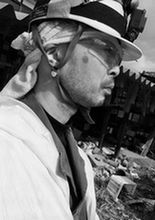
Almost 10 years have now passed since the 2011 Tohoku earthquake and tsunami and the Fukushima Daiichi nuclear disaster. As a result of these disasters, many historical and cultural materials were damaged or destroyed by seawater, while others were contaminated by radioactivity. And efforts to recover and preserve the latter are still ongoing.
Shintaro Nishimura, associate professor of the National Institute of Japanese Literature has been involved in the rescue and preservation of materials in disaster-hit areas since the immediate aftermath of the Tohoku earthquake. His involvement in the Fukushima prefecture rescue operations was brought about by an encounter with a student from Futaba-machi, Fukushima while he was helping to recover damaged materials in Ibaraki prefecture. Dr. Nishimura has worked energetically on the rescue and preservation of historical and cultural materials in areas around the Fukushima Daiichi nuclear power station, and continues doing so to this day. We asked Dr. Nishimura about his preservation efforts in Fukushima, what inspired him to get involved in such work, and why he finds the work rewarding.
I believe that you are still working even now, in 2020, on preserving historical and cultural materials in Fukushima. Where exactly are you working on now and what kind of artifacts did you rescue in your most recent rescue operations? Are there any experiences that made a particularly strong impression on you?
In July, August, and September, we worked on rescuing and preserving artifacts from the towns of Okuma-machi and Futaba-machi in the Futaba-gun district of Fukushima. These areas are within the evacuation zone that still remain largely uninhabitable. We also worked there in January and February, but the full-scale preservation work had to be postponed until the summer, due to the COVID-19 pandemic. Together with local people, we worked to preserve materials from private homes that are earmarked for demolition and also to measure and record the radioactivity levels of the preserved materials and catalog these materials.
The most exciting experience for me was when we discovered a large quantity of artifacts from the Edo period in a house in Okuma-machi. The oldest of these were from the 17th century. A previous survey conducted to locate historical materials had catalogued artifacts stored in this house, but we ended up finding much more than reported by the survey. Another thing that made a strong impression on me was hearing the reminiscences of the staffs of the local education board and other residents as we worked alongside each other. The residents of the area were all very knowledgeable about their district. Someone only had to mention the name of a place and they would launch into discussion, saying “Oh, that’s where such-and-such…” Listening to these lively exchanges between the locals is another good memory I have from the recent rescue work.
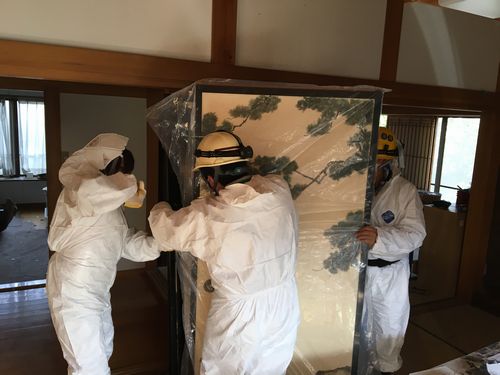
Rescue operations being conducted in Fukushima. A set of fusuma(sliding doors)is being recovered from a private home and handled for preservation.
What are some of the things you have realized or felt during your longstanding involvement in the rescue and preservation of historical and cultural artifacts in Fukushima?
Firstly, in view of the drastic turnover of people in the disaster-hit areas, I wonder how the history and culture of the areas could be preserved and handed down. In the space of less than 10 years since the disaster hit, some of the elderly that I met when I first started this work have already passed away, or else become frail and are now unable to participate in the preservation work. At the same time, children born after the disaster and elementary school children who helped at the initial stages with our rescue and preservation work have not lived in Futaba-machi in these 10 years, so the town no longer feels local to them. In other words, since fewer and fewer people are available to carry on the local history and culture, there is a crucial question of how these can be passed down to the next generation. I feel the difficulty of this task very keenly.
Secondly, even in areas where residents are allowed to return, many people are not returning. When events or ceremonies are held in disaster-hit areas, there are news reports that make it seem as if everything, even the local population has recovered, but the reality of the situation is different. For example, the station square has been nicely rebuilt, but if nobody is actually living in the surrounding area, can we truly say that the area has recovered from the disaster?
I fear that the turnover of people and the fact that people are not returning may mean that disaster-hit areas will be lost. Do you feel any sadness or despair about such a loss?
No, not really. For one thing, I think that in the long course of history, localities have a cycle of becoming extinct and newly created. As a historian however, I would be pleased if a locality where I was involved in material preservation is remembered not merely as a tragic place devastated by a nuclear power plant accident, but more fully, as a place with a history and culture predating the accident, even if only by one or two people. For this reason, I also make an effort to communicate the history and culture of the affected areas, for example, by holding local briefings about material preservation efforts and publishing booklets known as Oazashi (“village chronicles”) that document the history and culture of the local communities.
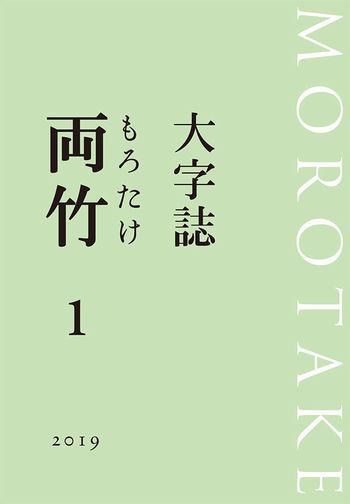
An issue of Oazashi was published in December 2019, focusing on the village of Morotake. This booklet was created with funding that was crowdsourced for a project, “We want to preserve the history and culture of Morotake village in Futaba-machi, Fukushima, which is being lost as a result of the Tohoku earthquake and tsunami and nuclear accident!”, that Dr. Nishimura proposed at a crowdfunding website managed by Asahi Shimbun.
How did you come to get involved in the rescue and preservation of local historical materials?
In the summer of my third year at Gakushuin University, I volunteered to help preserve old documents in the homes of ordinary people. The secretariat of Koshu Shiryo Chosakai, a voluntary association for preserving materials relating to Yamanashi prefecture, was run by some of my senpai(senior students)and based at Gakushuin university. One of my senpai invited me to join their preservation work, but it so happened that a girl I liked at the time was also participating. My decision to take part was not for the interest of the preservation work. However, when I actually got involved in the preservation activities, my perception of history research completely changed. I had previously thought historical materials were only stored in libraries or museums and that historical research was always done based on such documents. I learned, however, that in many cases the documents on which historical research is based can be found in ordinary places, and often in the homes of ordinary people. I also found out that unless such materials are properly documented and catalogued, it is impossible to conduct historical research. By participating in this volunteer work that summer, I realized that there are historical materials here, there, and everywhere—that is, all over the country. That’s when I decided to devote myself to rescuing and preserving historical materials. Later, when I joined Gakushuin’s faculty as an assistant, I launched a non-profit organization(NPO)called Rekishishiryo Keishokiko Jumpin'(Historical Succession Association), which I continue to lead.
What do you find most appealing about rescuing and preserving historical materials?
I get a much broader historical picture than what I could ever obtain just from reading what is written in the historical documents, when I work on preserving materials with people who have a wealth of knowledge about their local community and with members of local government bodies. I have the skills to read old Japanese cursive writings written in the historical documents, but I can only learn what is written in them. Speaking with local people as I read and analyze various materials allows me to come across questions and opinions that can only come from the perspective of the local people. With such input, I can attain a deeper understanding of the local history.
In this sense, my connections with the people and materials of a particular place or community give me even more insight into the local history and culture. I think this is what makes material preservation work so rewarding to me.
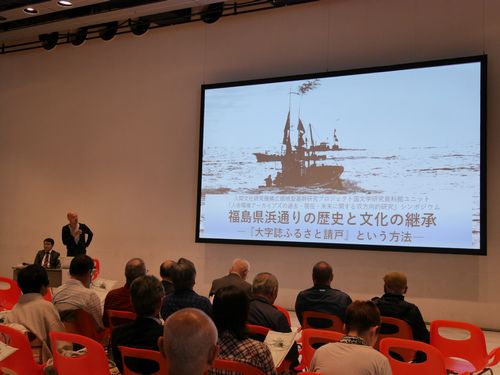
Dr. Nishimura at the Sendai Mediatheque on October 13, 2018, giving a presentation for residents of disaster-hit areas titled “Preserving the history and culture of the Hamadori district of Fukushima –through ‘Village chronicle of the community of Ukedo’”
It has taken 10 years to recover and preserve materials contaminated by radioactivity, because locals have been allowed to return to these disaster-hit areas only recently, after the bans were lifted. Dr. Nishimura explains that for health reasons, they do not allow university students and other young people to join the rescue and preservation work in the disaster-hit areas; the operations are carried out by wearing a set of pure white protective coveralls known as a Tyvek suit. These descriptions of the rescue and preservation operations in the affected areas are one indication that a full recovery from the Tohoku earthquake and tsunami is still a long way off.
(Interview: Ayumi Koso)
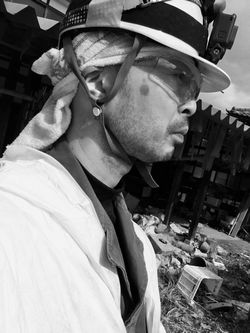
Shintaro Nishimura, National Institute of Japanese Literature
Nishimura specializes in modern Japanese history and the preservation of historical materials. After graduating from the Department of History, Faculty of Letters at Gakushuin University, he joined a doctoral program at the Gakushuin University Graduate School of Humanities and completed his doctoral coursework. In 2007 he earned a PhD (Historical Science) from Gakushuin University. In 2004 he began working as an assistant at the Department of History, Faculty of Letters, at Gakushuin University and in 2007 he took up a postdoctoral fellowship at the Japan Society for the Promotion of Science. He assumed his current position in 2010. He also serves as the Director of the NPO Rekishishiryo Keishokiko Jumpin' (Historical Succession Association).
